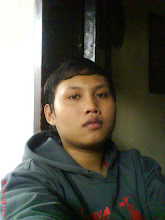Whatever Happened to Biofeedback?
In the 60�s, Biofeedback was just at the beginning stages with teaching a patient to monitor his body�s response to pain. In the 40 + years which have passed, Biofeedback has grown and expanded into the Neuroscience field we have today with various applications being used from Peak Performance training for athletes to reducing Seizure Disorder. Vast research exists today with wonderful results often surpassing the medical communities own research, surgical procedures and new pharmaceuticals. But no one knows about Neurofeedback. When quizzed about Biofeedback, people often say,� I heard about that in the 60�s. It didn�t work.� We heard about rocket science then too, and look where the Space Program has gone!
Neurofeedback is the use of EEG-driven computers to enhance brainwave training. The brain is run by four power frequencies: Alpha, Beta, Delta and Theta. It should function like a well oiled machine, but too often we use drugs, have car accidents or are subjected to illnesses and stress which can strip the brain of its self healing power. This can cause the brain frequencies to become out of sync, or to act like an engine �out of tune�. Using the computer and a Neurofeedback instrument, we can inhibit undesirable frequencies or enhance good frequencies to produce a better state of health. Once trained, the brain will maintain this new state of health. It�s like learning a new language. When you submerse yourself in training, your brain learns quickly and works to retain what it has learned. Your reward is better health, a calm and focused mind where things are accomplished more easily and quickly without stress or strain.
Success rates are amazing such as 85% for ADD/ADHD and 92% for Chronic Pain, and can generally see improvement in as little as 20 hours. With more complex diagnoses, greater numbers of sessions must be done in order to achieve success. Those with symptoms of Traumatic Brain Injury can have better cognition, memory, improved speech and gait, a reduction in seizures and lessening of paralysis. Quite often, a patient may also reduce the need for medication.
Through the use of the Quantitative Brain Map or QEEG, we can see the whole brain functioning at once and identify points of treatment. Seizure focal points can be noticed and treated before problems arise. ContraCoup injuries (whiplash) can be positively identified and specifically site treated. Some instruments can even help the therapist diagnose on a session-to-session basis. Our goal is to balance the brain and reduce our response to stress. Neurofeedback could well be the North Star to modern medicine. Whatever your diagnosis, be an informed patient. Do the research and see if Neurofeedback can help in some area of your life.
Explaining Neurofeedback:
�Symphony in the Brain� by Jim Robbins
Some helpful websites:
www.Biofeedbackcalifornia.org
www.Aapb.org
www. Snr-jnt.org
www.Eeginstitute.com
www.Neurofeedback-dribric.com
For research papers see the Byers Neurotherapy Reference Library. It contains thousands of publi8shed works on Neurotherapy. Contact your EEG professional for more information.

0 comments:
Post a Comment